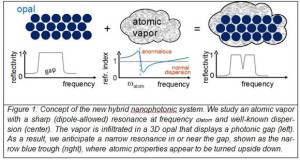It’s refreshing to be invited to a stakeholder or public engagement exercise being held by the Canadian government, which usually conducts these exercises as clandestine operations.
In this case, the Canada’s National Research Council (NRC) is inviting participation in something they’ve called, a Game-Changing Technologies Initiative. Here’s more from a Jan. 26, 2015 e-mail announcement,
NRC is undertaking a Game-Changing Technologies initiative that aims to identify technology areas that have the potential for revolutionary impacts on Canadian prosperity and the lives of Canadian citizens over the next 20 to 30 years.
As Canada’s Research and Technology Organization (RTO), NRC works with clients and partners to provide innovation support, strategic research, and scientific and technical services to develop and deploy solutions to meet Canada’s current and future industrial and societal needs.
Through a process that started six months ago, NRC has identified challenges and opportunities critical to Canada’s future, in which technology can play a defining role. The next step is to refine our understanding of these challenges and opportunities through a web-based exercise, in order to select opportunities that will be further developed.
This on-line exercise will seek insights from a diverse range of thought-leaders from industry, academia, government, innovation agencies, social groups and non-profit organizations across Canada. [emphasis mine] Outcomes of this initiative will help shape NRC’s investment strategy in emerging technologies, and identify key players with whom strategic partnerships are critical for success.
I invite you to take part in this on-line exercise that will take place from February 9 to 20, 2015. In order to register, please click on the following link https://nrcgamechanging.recollective.com/external-game-changing-technologies-initiative/join?key=rYSG. Please note that access to all the material on the platform will be available at the start of the exercise only, on February 9, 2015.
I also invite you to forward this invitation to members of your organization or your expert network who might want to contribute. External feedback is critical to help NRC identify game-changing technologies with the potential to improve Canada’s future competitiveness, productivity and quality of life.
Should you or a member of your team have any questions about this initiative, please do not hesitate to contact Dr. Carl Caron at: Carl.Caron@nrc-cnrc.gc.ca or 613-990-7381. We look forward to your participation.
For those who prefer or would like to test their abilities in French,
Le CNRC lance une Initiative sur les technologies révolutionnaires qui a pour objet de répertorier les technologies ayant le potentiel de révolutionner de nombreux secteurs de l’économie canadienne et la vie des Canadiens d’ici 20 à 30 ans.
En sa qualité d’organisation de recherche et de technologie (ORT) du Canada, le CNRC collabore avec ses clients et partenaires pour soutenir l’innovation et la recherche stratégique, et offre des services scientifiques et techniques de nature à favoriser le développement et la mise en œuvre de solutions susceptibles de répondre aux besoins industriels et sociaux actuels et futurs du Canada.
Dans le cadre d’un processus amorcé il y a six mois, le CNRC a répertorié plusieurs possibilités et défis cruciaux pour l’avenir du Canada et où la technologie pourrait jouer un rôle déterminant. L’étape suivante consistera à améliorer notre compréhension de ces défis et possibilités grâce à un exercice en ligne qui nous permettra de sélectionner les possibilités qui seront approfondies.
Cet exercice en ligne vise à recueillir le point de vue d’un large éventail de chefs de file de l’industrie, des milieux universitaires, de l’administration publique, d’organismes d’innovation, de groupes sociaux et d’organisations sans but lucratif de partout au Canada. Les résultats de l’initiative inspireront la stratégie d’investissement du CNRC dans les technologies émergentes et permettront d’identifier les acteurs clés avec qui il est fondamental d’établir des partenariats stratégiques pour connaître du succès.
Je vous invite à participer à cet exercice en ligne qui aura lieu du 9 au 20 février 2015. Pour vous inscrire, veuillez cliquer sur le lien suivant https://nrcgamechanging.recollective.com/external-game-changing-technologies-initiative/join?key=rYSG. Veuillez noter que l’accès à tout le matériel se trouvant sur la plateforme sera possible seulement lorsque l’exercice débutera, soit le 9 février 2015.
Je vous serais également reconnaissant de transmettre cette invitation aux membres de votre organisation ou de votre réseau d’experts qui pourraient souhaiter apporter leur contribution. Les commentaires de parties externes au CNRC sont cruciaux pour aider notre organisation à déterminer quelles sont les technologies révolutionnaires ayant le potentiel d’accroître la compétitivité, la productivité et la qualité de vie au Canada.
Si vous ou un membre de votre équipe avez des questions à propos de cette initiative, n’hésitez pas à communiquer avec M. Carl Caron par courriel à l’adresse Carl.Caron@nrc-cnrc.gc.ca ou par téléphone au 613-990-7381.
En espérant que vous accepterez de participer à cet exercice, je vous prie de recevoir, Madame, mes salutations les meilleures.
I was unable to find out more about this initiative from sources outside the NRC despite several searches. However, the initiative’s website does provide some information although you have to scroll to the bottom of the page to find options you can click on. A backgrounder is provided (click on About) which offers some additional detail,
Over the last six months, NRC has worked closely with internal and external stakeholders to identify key opportunities and challenges facing Canada over the next two decades, and game-changing technologies that offer potential solutions. Through this process, NRC has already identified and is now working with stakeholders to build programs that address technology opportunities for advanced manufacturing (the Factory of the Future) and the development of Canada’s Arctic resources and communities (NRC Arctic Program). Through this process, NRC has also identified seven additional game-changing opportunities:
Next generation health care systems
Maintaining quality of life for an aging population
A safe, sustainable and profitable food industry
Protecting Canadian security and privacy
Transforming the classroom for continuous and adaptive learning
The cities of the future
Prosperous and sustainable rural and remote communitiesThis list is not comprehensive but is intended to stimulate discussion with our employees and a diverse range of thought-leaders by means of a web-based platform
There are instructions for eager beavers who want to prepare ahead of time. I was particularly struck by this passage,
We ask participants to:
Participate by volunteering your ideas, sharing your knowledge and engaging in discussions with other participants.
Speak freely and respect each other’s input.
Keep your responses and discussions polite and respectful. Any responses containing language or opinions that the moderators deem to be offensive will be deleted and the participant will be informed of the deletion.
Keep jargon to a minimum
I see two instances of the word ‘respect’ (in one form or another) and one instance of the word ‘polite’ which makes the organizers seem a little nervous. Fair enough. This appears to be the NRC’s first foray into a general, online, participatory exercise and tales of bad behaviour online are legion so a little apprehension is understandable.
They’ve also included a methodology for which I offer profound thanks as it helps to place this initiative into perspective,
Step 1: Meta-scan– Secondary Research
To identify global technological opportunities and challenges across all sectors of the economy and facets of society, NRC conducted a comprehensive Meta-scan (or scan of scans), surveying over 150 recent publications that predict future economic, social, and political developments from around the world. This process enabled NRC to acquire insights on a large number of megatrends or major shifts in the long-term outlook.Step 2: Canadian Game-Changing Technologies Foresight Workshop
In May 2014, leveraging this initial research, NRC hosted a facilitated workshop with select internal and external stakeholders to further explore global challenges and trends based on their potential for impact on Canada, within a 20 – 30 year timeframe. This activity identified a number of themes, including: health care; environmental change; education; energy demand and security; and water usage, quality and security.Step 3: Interviews with Thought Leaders
NRC also conducted interviews with selected thought leaders and experts across Canada to seek perspectives on global trends and issues and identify areas critical to Canada’s future in which game-changers can play a defining role. Interviews were conducted with representatives from diverse horizons and regions, including industry, other Federal and provincial government departments, academia and social groups. This led to the identification of dozens of potential opportunities in many areas, as well as pervasive technology platforms.Step 4: Analysis and Distillation of Opportunities and Challenges
NRC conducted an analysis that organized and synthesized all data gathered to date; and identified seven opportunities for further assessment. The first stage was a facilitated process that drew together internal and external participants to analyse the Meta-scan data. During this process the opportunities were classified into 70 potential opportunities which were then bundled and refined for a second filtering process which looked at commonalities among opportunities. Those opportunities were bundled into a series of themes, resulting in 13 cross-cutting opportunities and challenges. Further consolidation and the removal of opportunities/challenges that NRC already identified and is working with stakeholders to build programs, resulted in the current list of seven.Step 5: Development of Opportunity Descriptions
The seven opportunities and challenges were crafted into high-level, one-page descriptions that include a short “Scenario Vignette” focussing on key issues that are meant to be reflective of particular social, economic or industrial aspects of a possible Canadian future state, set approximately 20 to 30 years in the future.Step 6: Stakeholder Engagement
Drawing on the seven opportunities emerging from the analysis, NRC is now inviting stakeholders to participate in a facilitated online eng agement to share ideas and refine its understanding of these opportunities.Step 7: Selection of Opportunities
Following the stakeholder engagement, NRC will analyse the participant feedback and select a number of opportunities to be further developed in collaboration with potential partners
It seems that despite the contents of my invitation, I’m not a ‘thought leader’ but an ‘afterthought leader’ arriving on the scene at stage six in a seven-stage process. (One comment to the organizers, your willingness to include a broad swath of individuals/stakeholders is much appreciated although you might want to take a little more care with your messaging, especially with regard to the term ‘thought leader’.) But, I’m not bitter (points to anyone who recognized the nod to an old, oft-repeated Royal Canadian Air Farce bit about former Member of Parliament John Nunziata) just very happy they’re trying a more open approach. This approach is more in keeping with what I’ve seen practised in other jurisdictions.
In any event, I expect to participate in this initiative which extends from Monday, Feb. 9, 2015 to Friday, Feb. 20, 2015. Make special note that full access to the material on the platform is available on Feb. 9, 2015 only. This initiative is open to both Canadians and citizens of other countries.
I looked up two names associated with this Game-Changing Technologies Initiative. Carl Caron, the contact mentioned in the notice, can be found here on LinkedIn. Briefly, his job title is listed as Director General, Strategy and Development Branch, National Research Council, a job he has held since Aug. 2011. He is a political scientist by training and I believe he has a PhD. The second person, Danial D.M. Wayner is Vice-President, Emerging Technologies, Vice-président, Technologies émergentes. His biography page can be found here on the Canada National Research Council website. Dr. Wayner has held his current position since Jan. 2010. He is a chemist by training.

